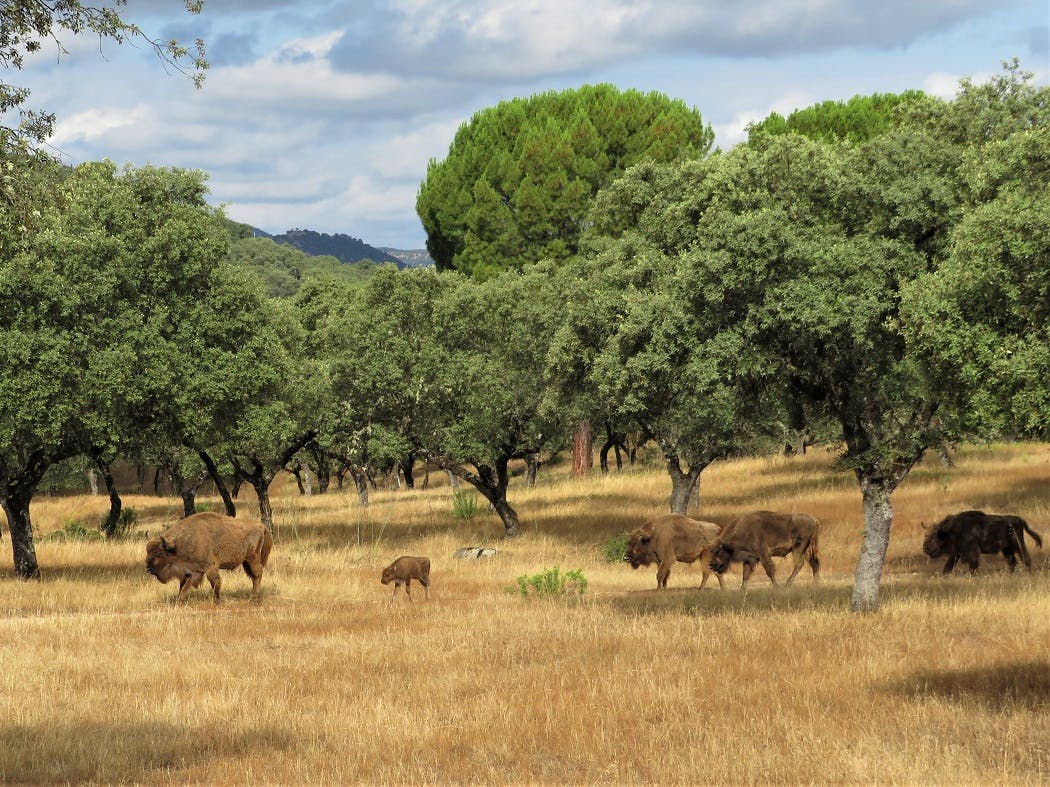- The comeback of Europe’s largest living land animal
- From conserving to rewilding
- Setting the scene of the bison’s release
- Home of the endangered
- Monitoring is key
- Following the lead
- Settling into the Andalusian life
- A boost for biodiversity
- Teaming with life
- Looking at the landscape level
- Revealing who's responsible
- Insights into the bison’s impact
- Putting theory into practice
Europe’s very own species of bison (Bison bonasus), without a doubt one of the icons of today’s rewilding movement, almost slid into complete extinction a hundred years ago. Thankfully, catastrophe was averted at the last minute, and the species’ conservation has since proven a success story. However, challenges still remain.
Read on to discover the most recent findings of bison reintroductions by the European Bison Conservation Centre of Spain, with the support of Mossy Earth.
The comeback of Europe’s largest living land animal
The European bison is the heaviest terrestrial animal still to be found in Europe. Adult males can reach 1.88 meters in height at their distinctive hump and weigh well over a staggering 800 kilograms. A wild species by nature, though calm in appearance.
The last of these gentle giants were hunted to extinction in the wild after struggling to survive due to loss of habitat. The importance of captive animals cannot be overstated in the case of the European bison, also known as wisent. The sole survivors of the entire species made it possible that we still have Europe’s bison today.
Dedicated conservationists started to bring back bison to the wild in the early 1950s. Ever since, due to continued support and additional reintroductions, bison numbers have been on the rise.
This year the global European bison population is expected to climb beyond the milestone of 10,000 individuals!
Mossy Earth Co-founder Duarte, documented his encounter when he went to see these magnificent beasts up close at a rewilding site on a lonely Danish island, which you can read about here.
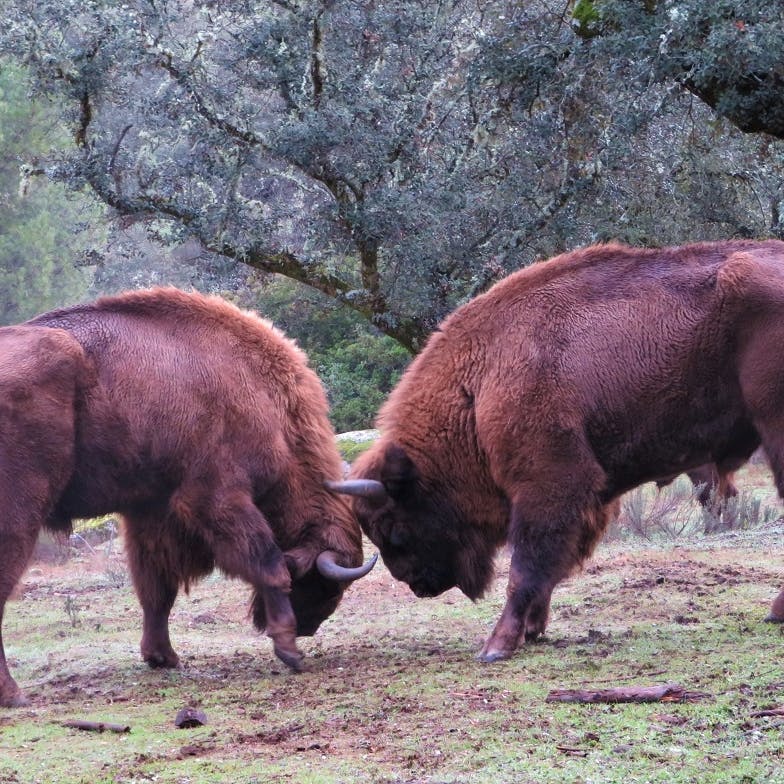
From conserving to rewilding
The past decade has been monumental for European bison as their numbers doubled due to committed conservation efforts. Meanwhile, the charismatic species has been able to step right into the growing rewilding movement, which has further paved the way for them back into people’s minds. In parallel, the role in nature of these large herbivores has become more and more a topic of interest.
Years of experiences and studies in different landscape settings have shifted the beliefs in what natural conditions European bison are able to prosper in. In essence, science is driven by the same power as nature itself: evolution.
Equipped with a broader understanding of the species needs in nature, parts of the continent became available for a possible return of the massive mammal.
Bison are big and live in herds so no doubt they need space, but perhaps what they really need is a fair chance from humans. Fortunately, in the last few years, conservation organisations and land managers have given them just this and welcomed bison to their areas.
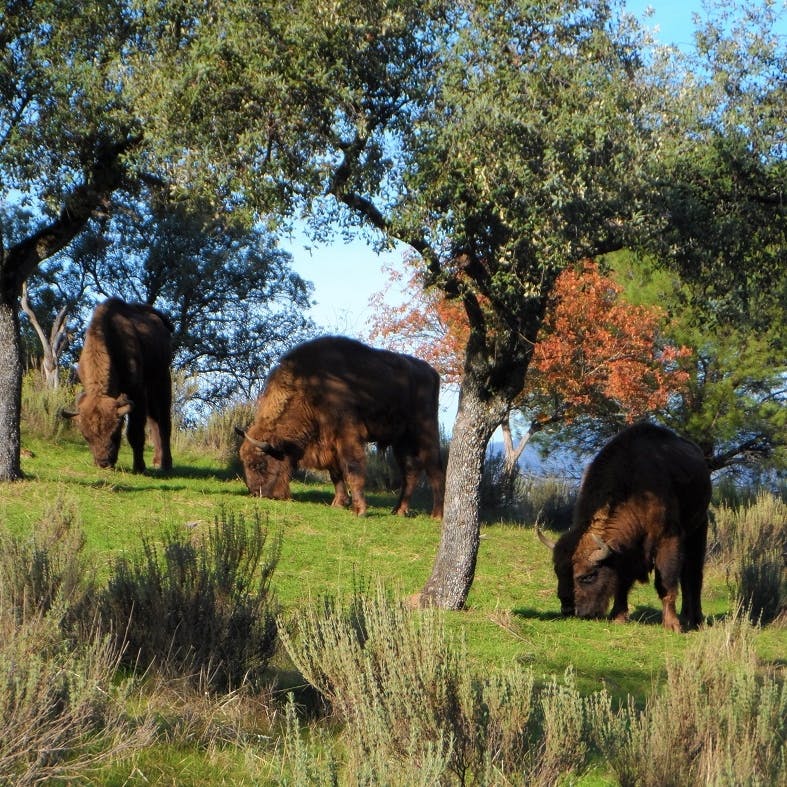
Setting the scene of the bison’s release
One such exciting endeavour recently took place in the wild Andalusian region of Spain, right in front of my eyes.
In autumn 2020, bison from different localities in the species’ stronghold of Poland were released into the private property ‘El Encinarejo’, loosely translated to ‘The Oak tree valley’. The roughly 1,000 hectare fenced finca directly neighbours the Sierra de Andújar Natural Park. Its rolling landscape offers sweeping views over this characteristic Mediterranean treasure that has been one of the prime homelands of the highly endangered Iberian lynx. Here, native Stone pine trees alternate with evergreen Holm oaks. There is an abundance of Olive and Strawberry tree.
In summer, the air fills with aromas of Lavender and Rosemary. The fairly open oak canopy gives way to grasslands that try to hug their distinctive trunks, only to be stopped there and then by the shrubs of Mastic. Here, you can find a well-varied herbaceous community counting over forty species.
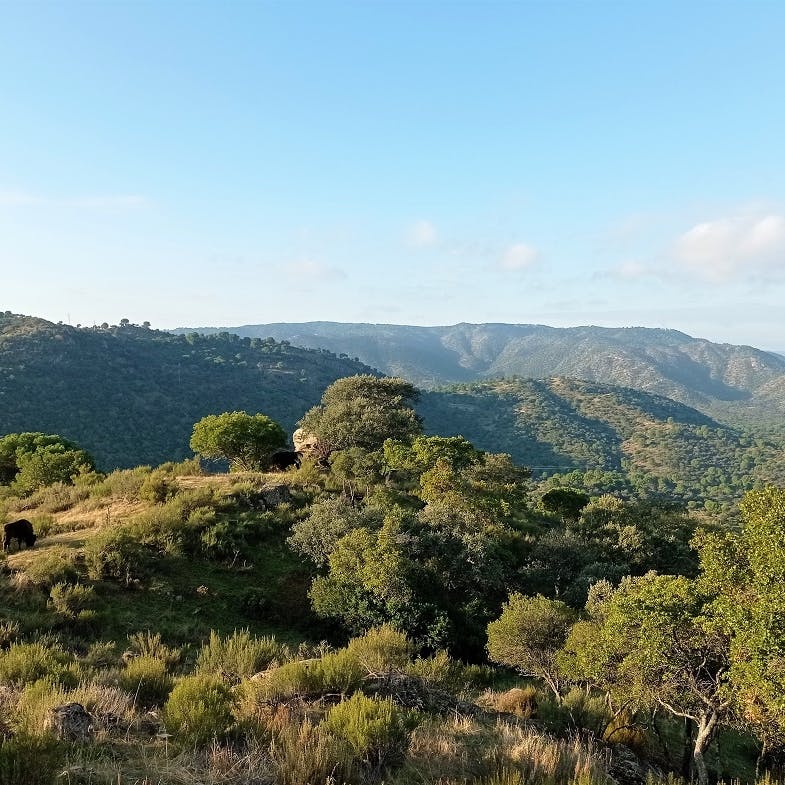
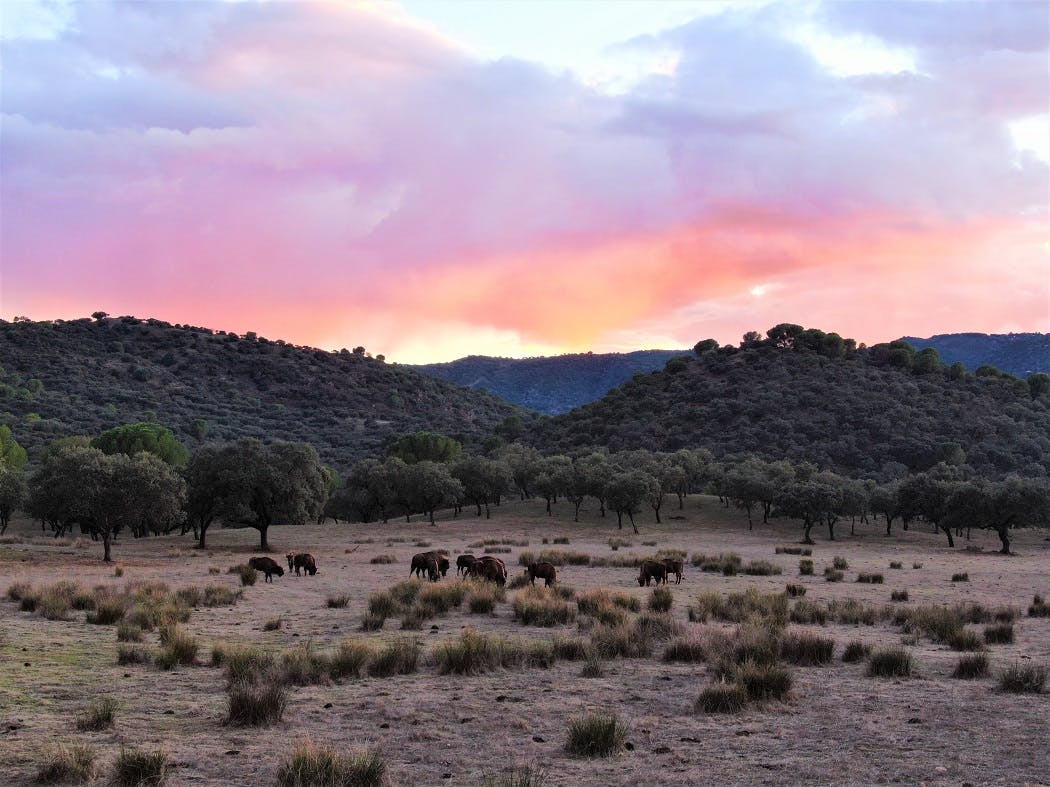
Home of the endangered
Besides being home to the world’s most endangered cat, this is the scene where the Spanish imperial eagle as well as the Cinereous vulture soar the sky. These two impressive birds are included on Spain’s endangered species list too. This multifunctional, half-open terrain that goes by the name dehesa provides refuge for species like the European rabbit and Red-legged partridge, both important in their own rights but also fundamentally vital as a food source for a range of predators.
This environment is judged as a Special Area of Conservation by the European Union. Beautiful blue feathered Iberian magpies abound here. Little owls covered in camouflage give off piercing stares. Acrobatic European bee-eaters arrive in spring, as Eurasian golden orioles begin singing their songs. Both birds paint the landscape with their colourful plumage.
On ground level, a European badger waddles through the night. You can stumble upon a resting Horseshoe whip snake, or a colourful Ocellated lizard on guard, or any of the smaller species basking in the sun on a rocky outcrop as this is also the land of the lizards. This is the Sierra de Andújar.
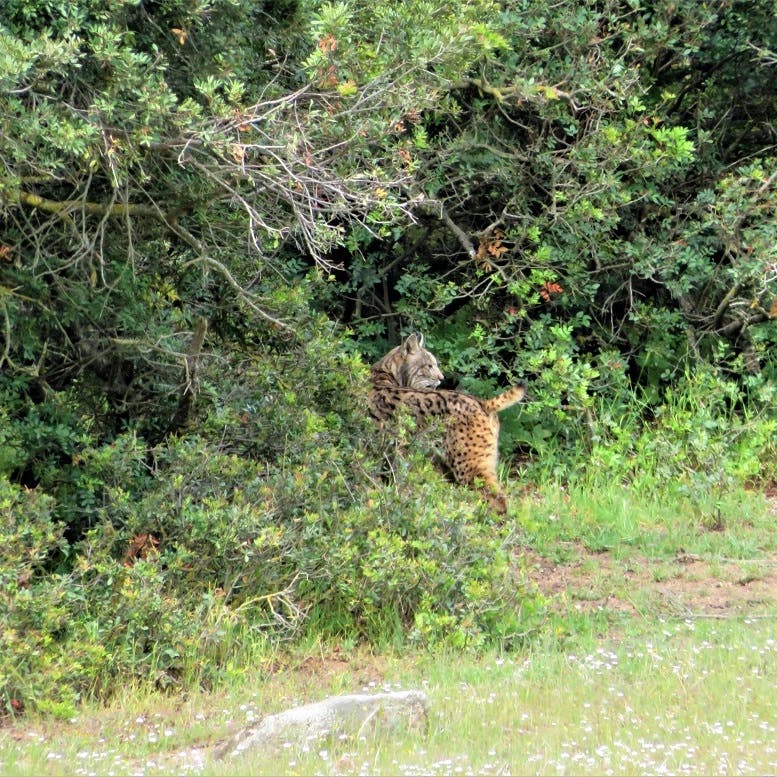

Take action now
Do you want to have a direct impact on climate change? Sir David Attenborough said the best thing we can do is to rewild the planet. So we run reforestation and rewilding programs across the globe to restore wild ecosystems and capture carbon.
Get involvedMonitoring is key
Introducing a species like European bison into a new area is not a process that happens overnight. It is the result of a prolonged preparatory phase and includes obtaining all the relevant permissions. Due to its climatic conditions -dry, hot summers being the most obvious- this part of Spain at times might feel a harsh environment.
Starting such a pioneering project in the most southern location for bison in European nature comes with responsibility. The wellbeing of the bison as well as the already present inhabitants of the area is a high priority.
We put together a detailed monitoring programme to follow the adaptation of the newcomers and their impact on what was already living there. Expectations needed to be examined, assumptions to be addressed. So, we started to study and see for ourselves.
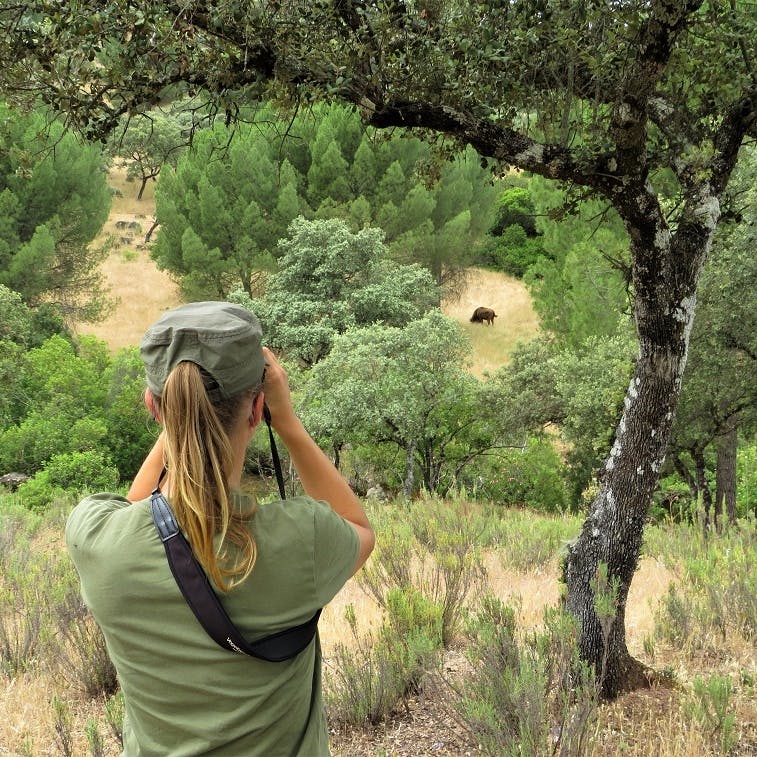
Following the lead
After a lengthy journey by truck covering some 3,000 kilometres, we welcomed 18 bison and cautiously observed how they were individually coping with the newfound freedom, and if they bonded well with each other.
Some mature females were equipped with GPS collars, and camera traps were set up at various locations throughout the territory. This enabled us to gain detailed insights into the whereabouts of the bison, their activity patterns, and direct or indirect species interactions.
Mossy Earth kindly supported these monitoring activities by providing funding for equipment. Cameras and drones captured additional footage to verify impact on the landscape, specifically what had been due to foraging behaviour and treading.
To top it off, faecal matter of bison and fellow residents Red deer and Fallow deer was collected every month enabling a direct diet comparison.
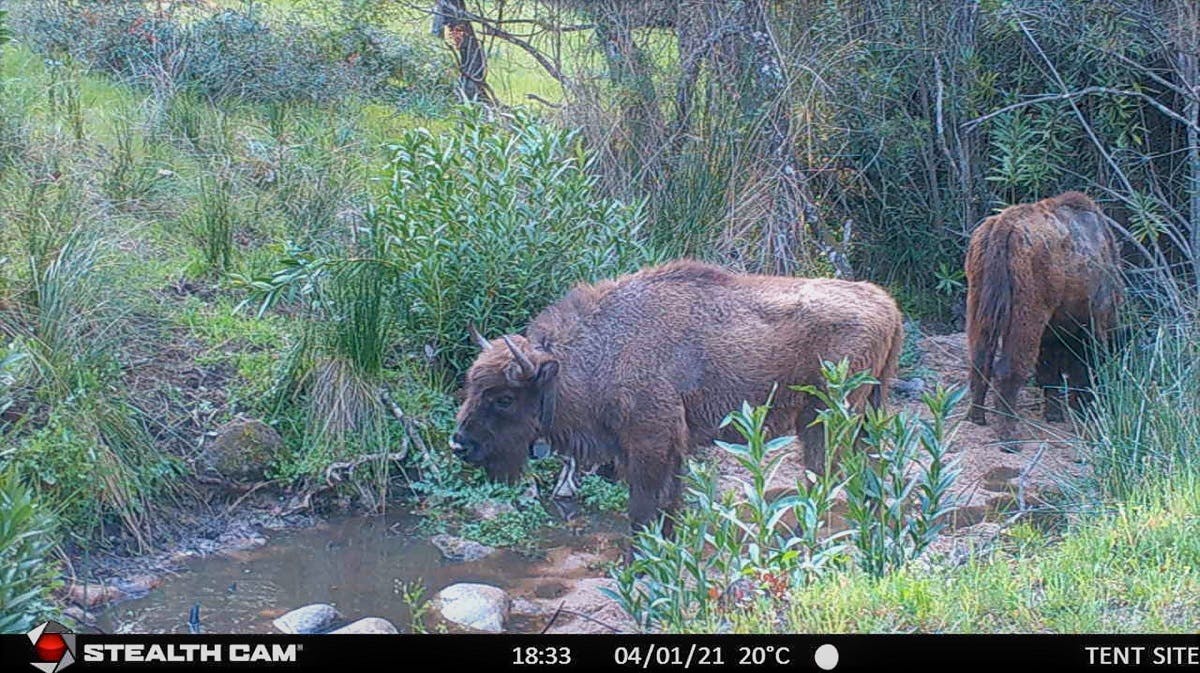
Settling into the Andalusian life
So, what did we learn from their first year at the Sierra de Andújar?
First and foremost, a plethora of findings shows the bison herd is doing fine. In the very first months some health challenges had to be addressed but with proper monitoring in place and adequate action, this was merely part of the adaptation process.
The unfamiliar bison quickly grouped up and formed a new herd hierarchy. They are highly social animals.
The summer of 2021 was their first southern summer and observations and accompanying GPS data show they can deal with the high temperatures. They tend to take it easy when over 40 degrees and at or below 0, but who wouldn’t?
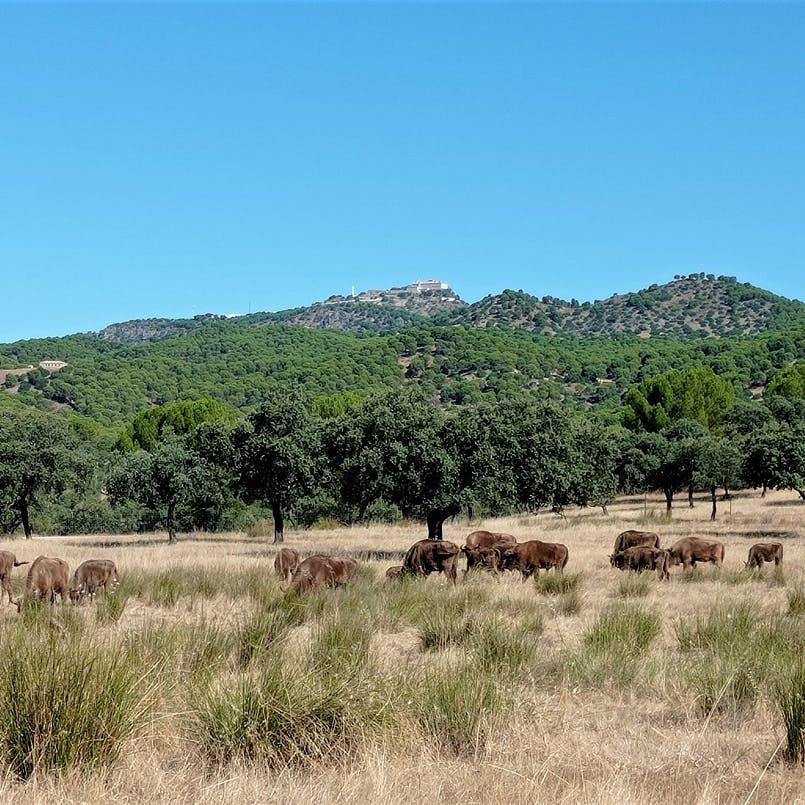
A boost for biodiversity
Soon we saw Eurasian magpies surrounding the bison. Smart as they are, they sensed there was something to get from the big beasts. As they often do here with Red deer, they snatch flies while riding their backs or go into a more detailed investigation of abdomen or ears of the host for a tick treat. Though behaving quite skittish when observed, camera trap footage showed these birds treading the bison this way. Eurasian jackdaws performed the same trick.
The passing of a bison gives back to nature too, another subject of study. Camera traps on deceased bison revealed several major species profiting from the loss of life. Golden eagle, Griffon vulture, Black vulture, Red fox and of course black-and-white magpie have all taken advantage. The Egyptian mongoose also seemed to take notice.
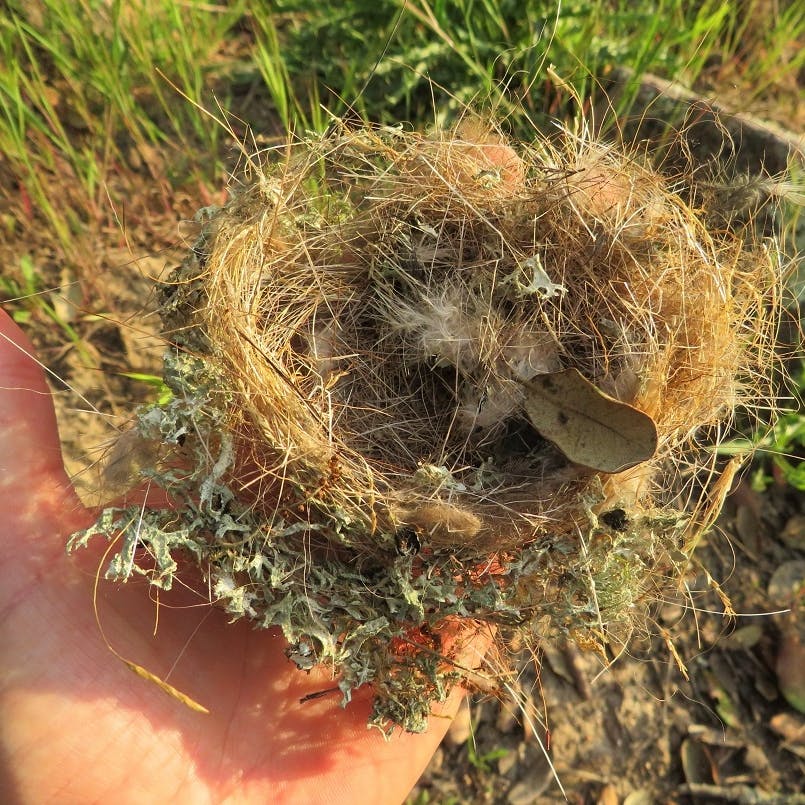
Teaming with life
Ever since the days after the release of the bison, we have witnessed dung beetles feeding on their fresh faeces. A recent report by IUCN states that no less than twenty percent of Mediterranean dung beetle species are threatened. One of the major reasons is contaminated dung of livestock due to veterinary products trying to keep livestock healthy, while destroying life that depends on uncontaminated faeces.
Bison dung however is free of pesticides. Up close and personal observations have revealed an abundance of nutrients on offer. Different fly species lay their eggs there, resulting in a baby boom of larvae. Birds once again join in, this time to feed on the grubs in the faeces.
Whenever the bison leave a heap of poo behind, a bunch of magpies meticulously goes through it to peck away at the goodies. They are not the only ones, Eurasian blackbirds do exactly the same, though in a more private manner.
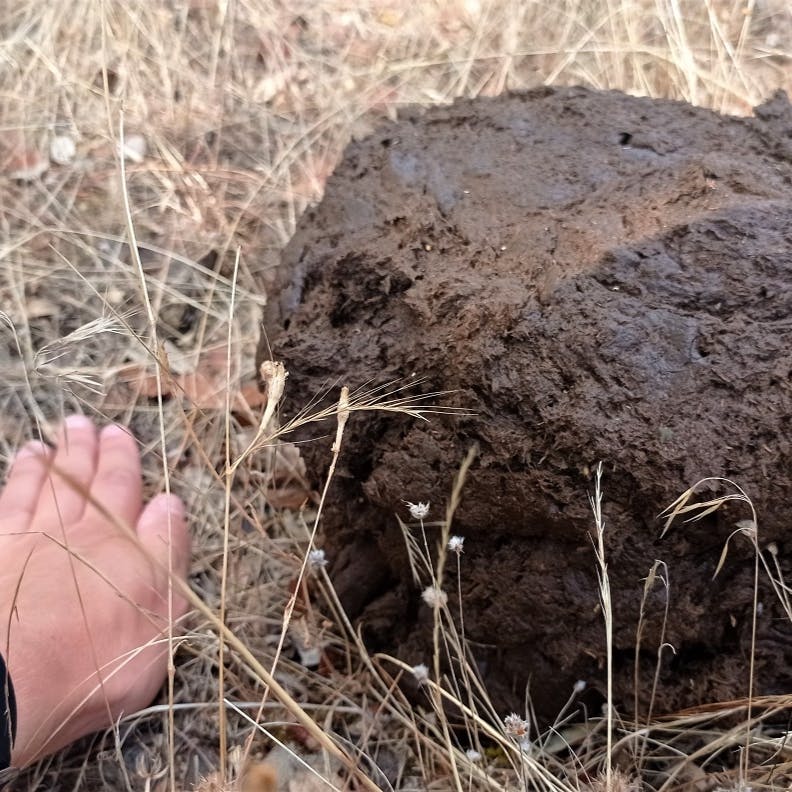

Looking at the landscape level
Mostly a grazing species, bison use other forms of vegetation to complement their diet year-round. Taking bites from leaves, branches and bark is well known, and they go nuts for fruits like acorns.
We followed the bison and found that during their first weeks of exploring the property, they debarked a small number of trees. However, months later the vegetation was regenerating.
What turned out to be a far more important source of food for the herd was Mastic. This shrubby, evergreen tree grows basically everywhere in the region. Inhabitants like Red deer were already fondly foraging on it. With known health benefits for ruminants, it is not a surprise that bison were quick to discover their fancy for this foliage too.
This significant use by bison seems to be a first, to my knowledge it has not been reported before.
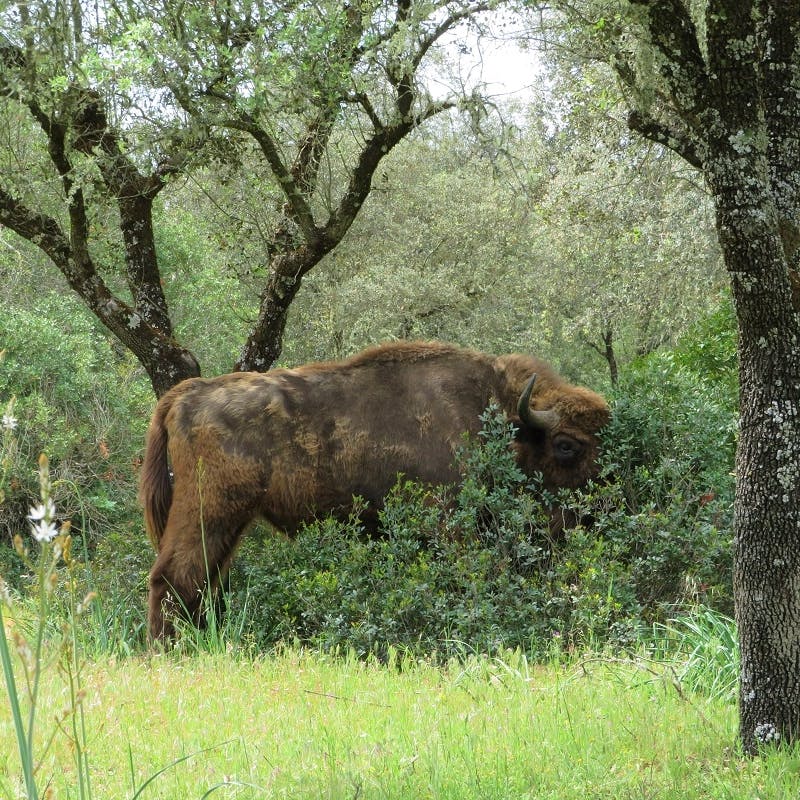
Revealing who's responsible
Another area of particular interest concerned the wallowing behaviour of the bison, which involves them rolling around in a kind of ‘dust bath’. What does this behaviour do to the environment? Inspection via observations, camera traps and drone revealed the bison tend to do so where the soil is already exposed, like dirt roads and fire breaks. The available sandy surface is perfect for daily grooming and resting. Camera trap footage shows Red deer and Fallow deer used these wallow sites for the same reason. However, since bison weigh way more than any deer, wallowing by bison makes the spot far more prone to staying open from vegetation.
During the driest time of year, wildlife become more restricted to the major water sources present throughout the area. This is where we set up some extra eyes as well. Obviously, the spots are usually drunk by all ungulates and, if lynx live near, by them too. But that’s not the only behaviour we recorded.
Bathing is the next best thing to do. Entire wild boar families go wild during mud bathing. Red deer, including their young, also exhibited this behaviour. Bison did not use the water sources to bathe.
While bison are large animals with a capacity to significantly shape their landscape, soils get impacted in various and species-specific ways not just by the hoofed mammals present but by burrowing species like rabbit and badger too.
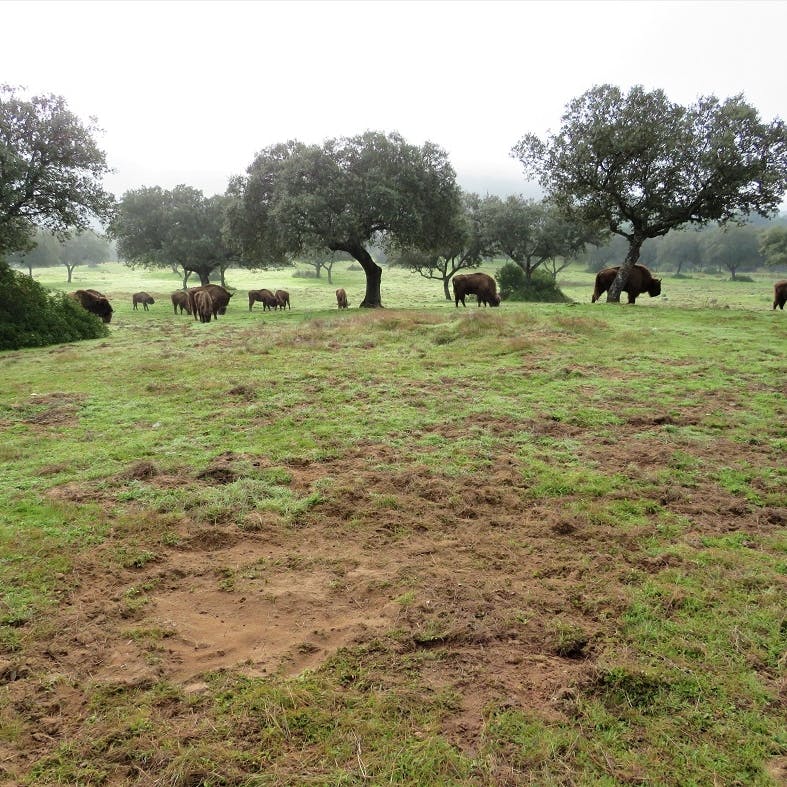
Insights into the bison’s impact
One and a half years in, the bison continue to coexist calmly with lynx, rabbit, partridge, and other creatures big and small. From their perspective, bison are just a bunch of big furry animals, in a land where once a legion of cattle wandered.
Interactions are plentiful and consist mostly of passing by. Nowhere else in nature do you have a chance to spot the spectacular Iberian lynx, Spanish imperial eagle, Cinereous vulture, and European bison all in one place. Besides being fascinating to see, they share a story of vulnerability. Wildlife watching doesn’t just enable people to enjoy the stunning scenery and marvel at these animals, it also helps to promote the importance of these species and their role in the natural world.
From an ecological point of view, it is too early to make bold statements. But, we have gained initial insights into the bison’s biology and their ecological role in Andalusian nature. Data suggests the current herd of seventeen bison have not had any lasting negative impact on the more than 900 hectares they roam. Extended monitoring continues to provide a lot of information, which increases the overall understanding of the species.
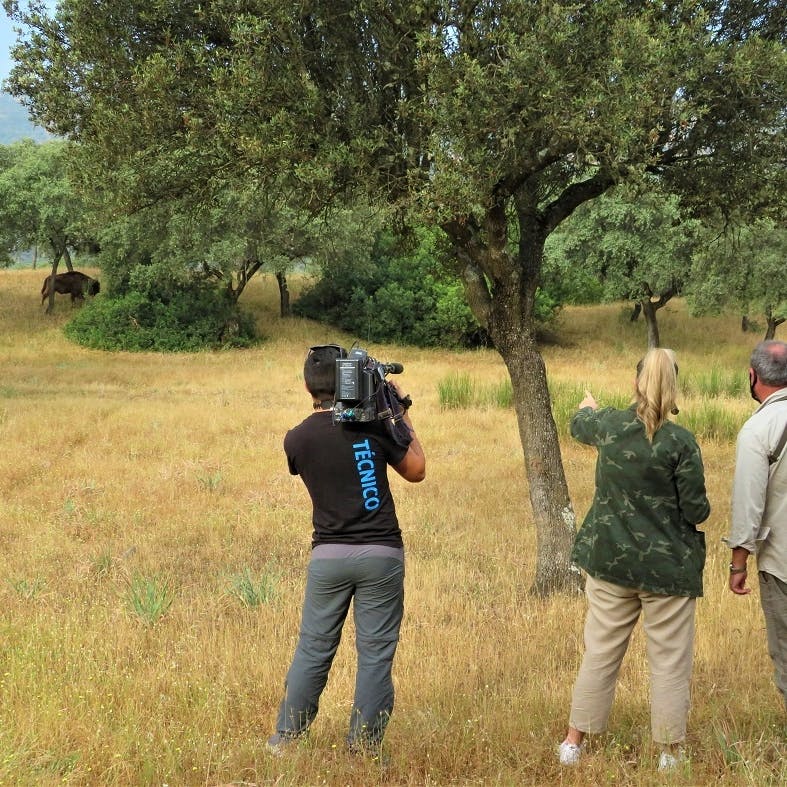
Putting theory into practice
Halfway through 2021, the very first of a new generation was born at the Sierra. Being born and raised here will make offspring best adapted to the environment. One calf at a time, the bison is bound to profit from the protection that is being provided to them, here and beyond.
From an ecological perspective, when bison return or arrive to a new landscape, it is not only their grazing and browsing impacts, or the way they wallow, that is important, they play a substantial role in the circle of life, both when alive and after.
One can argue that the European bison doesn’t belong in this landscape as no fossil remains have been found (yet) in this part of the continent. However, instead of looking for arguments against action, you could roll up your sleeves and start doing something bold and ambitious, as we have at ‘El Encinarejo’, keeping a close eye on things with effective monitoring. I believe in the latter, as I believe in the power of nature, which in wild Europe, includes the almighty European bison.
